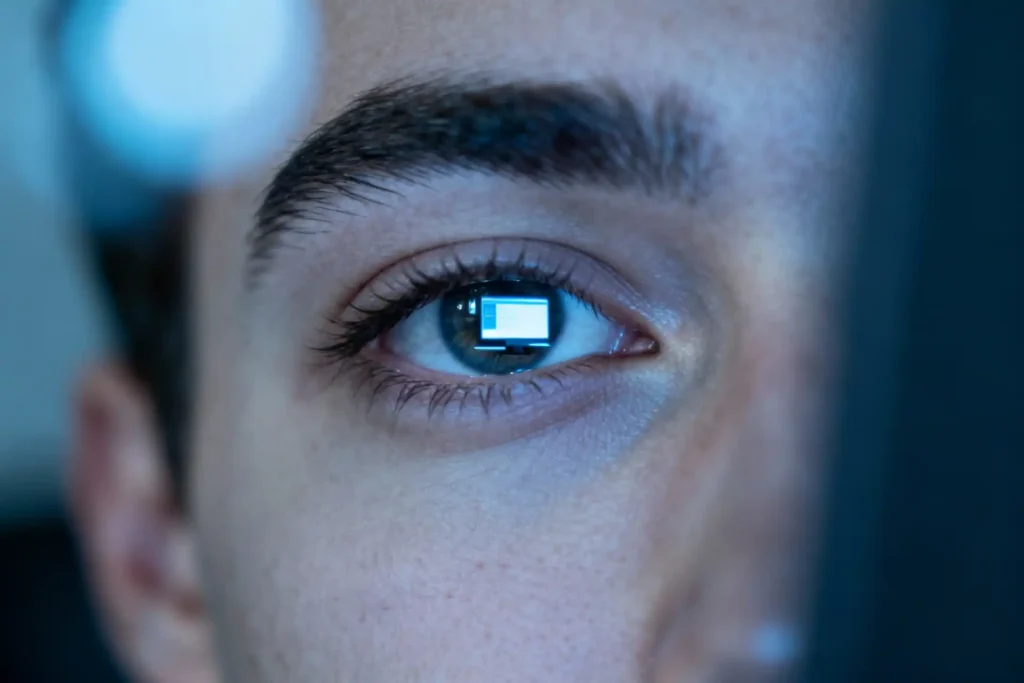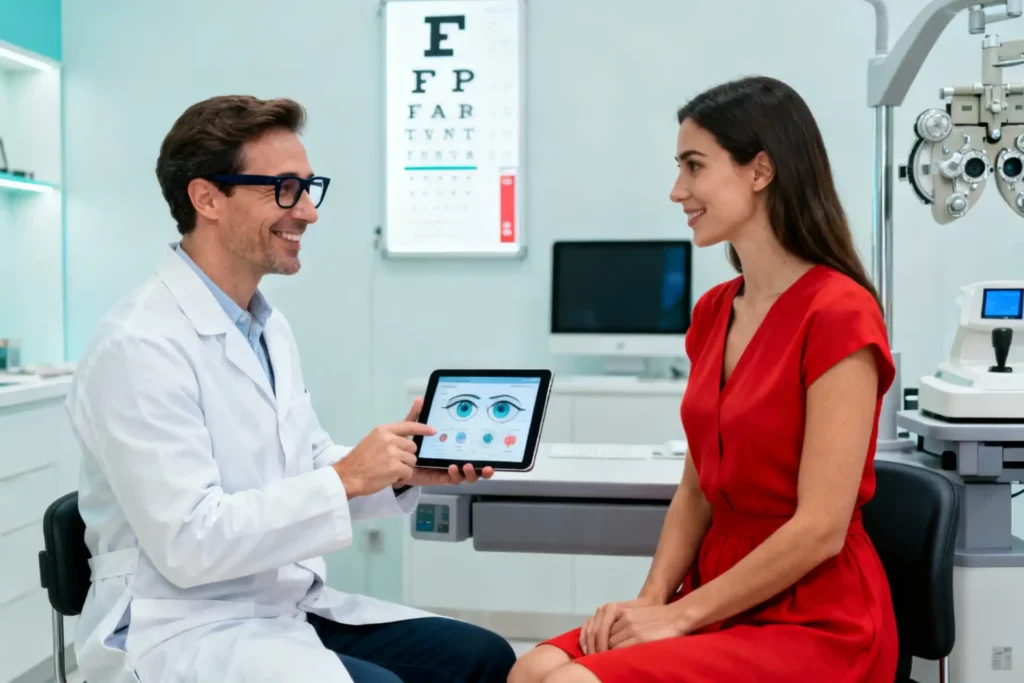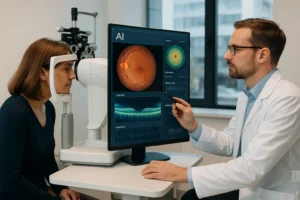How to Prevent Digital Eye Strain in 2025: Smart Habits for Screen Users
From smartphones to laptops, our eyes are working harder than ever. As screen time increases, so does the risk of digital eye strain—a modern vision problem affecting millions of people worldwide. If you spend hours each day staring at digital devices, understanding how to prevent digital eye strain is one of the best things you can do for your eye health in 2025.
At Bridgemill Eye Care, our optometrists have seen a steady rise in patients reporting headaches, blurred vision, and dry eyes caused by prolonged screen use. But the good news is: small adjustments can make a big difference.
1. What Is Digital Eye Strain?
Digital eye strain—also known as computer vision syndrome—occurs when your eyes work harder than usual while focusing on screens. Reading text on digital devices requires constant refocusing, especially when glare, brightness, or poor posture make the task more difficult.
Common symptoms include:
- Dry or irritated eyes
- Headaches and neck pain
- Blurred or double vision
- Increased sensitivity to light
- Difficulty focusing after screen use
If you experience any of these symptoms daily, it may be time for an eye exam to evaluate your digital vision health.
2. Follow the 20-20-20 Rule
One of the simplest ways to prevent digital eye strain is the 20-20-20 rule: every 20 minutes, look at something 20 feet away for at least 20 seconds. This gives your eye muscles a chance to relax, reducing fatigue throughout the day.
For those who work long hours at a computer, consider using reminder apps or smartwatches to prompt these short eye breaks.
3. Adjust Your Lighting and Screen Settings
Harsh or uneven lighting is one of the biggest causes of eye strain. Make sure your screen brightness matches the light in your environment—too bright or too dim can force your eyes to overcompensate.
Additional tips include:
- Position your monitor about 20–24 inches from your face.
- Keep the top of your screen at or slightly below eye level.
- Use an anti-glare screen filter or matte monitor coating.
- Reduce overhead fluorescent lights whenever possible.

4. Blink More Often
Studies show that people blink about 60% less when using screens. This can quickly dry out your eyes and cause irritation. To combat this, make a conscious effort to blink more often—or use lubricating eye drops recommended by your optometrist.
Humidifiers can also help prevent dry air from worsening symptoms, especially in air-conditioned offices.
5. Use Blue Light Protection
Blue light from digital screens can disrupt your natural sleep cycle and contribute to long-term visual fatigue. In 2025, most eye care specialists recommend using blue light–blocking glasses or enabling “night mode” on your devices.
Blue light filters don’t just improve comfort—they also support better sleep by reducing exposure before bedtime.
6. Schedule Regular Eye Exams
Even mild vision changes can make focusing on screens more difficult. Routine eye exams help detect refractive errors, monitor eye pressure, and ensure your prescription is up-to-date. Your optometrist can also check for early signs of dry eye syndrome or other issues caused by extended screen time.
At Bridgemill Eye Care, our team uses state-of-the-art digital imaging tools to evaluate your vision health and recommend personalized eye care solutions.

7. Optimize Your Workspace Ergonomics
Ergonomics play a major role in reducing strain. Keep your monitor at arm’s length, your chair adjusted so your feet rest flat, and avoid leaning forward or squinting. Proper posture helps minimize neck and back tension that often accompanies eye strain.
Consider using a standing desk or adjustable monitor mount to align your eyes and reduce glare angles throughout the day.
8. Don’t Ignore the Early Warning Signs
Ignoring minor symptoms can lead to long-term discomfort or vision issues. If you experience persistent dryness, headaches, or blurry vision, book an appointment with your optometrist. Early detection and tailored treatment—such as specialized lenses or artificial tears—can prevent chronic digital eye strain from worsening.
9. Try Eye Exercises and Screen Break Apps
Several digital tools are now available to help protect your vision. Apps like EyeCare, Workrave, and F.lux remind you to take breaks and adjust brightness automatically throughout the day.
Additionally, simple exercises like rolling your eyes in circular motions or focusing on distant objects for 30 seconds can strengthen your eye muscles and maintain flexibility.
10. Prioritize Whole-Body Wellness
Good eye health doesn’t stop at the eyes. Hydration, nutrition, and sleep all influence how your vision responds to daily stress. Eating foods rich in omega-3 fatty acids, vitamin A, and lutein—such as salmon, leafy greens, and carrots—can protect against oxidative stress and support overall eye wellness.
For more on nutrition and vision, check out our article on Eye Vitamins for Vision Health.
Final Thoughts
In today’s digital world, taking care of your eyes is no longer optional—it’s essential. With consistent habits, smart lighting, and regular check-ups, you can prevent digital eye strain and keep your vision healthy for years to come.
Protect your eyes now—your future self will thank you.





